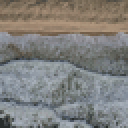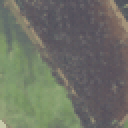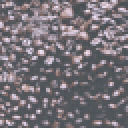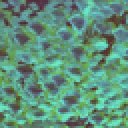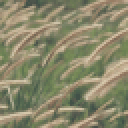The lite-sora project is an initiative to replicate Sora, co-launched by East China Normal University and the ModelScope community. It aims to explore the minimal reproduction and streamlined implementation of the video generation algorithms behind Sora. We hope to provide concise and readable code to facilitate collective experimentation and improvement, continuously pushing the boundaries of open-source video generation technology.
- Implement the base architecture
- Models
- Text Encoder(based on Stable Diffusion XL's Text Encoder)
- VideoDiT(based on Facebook DiT)
- VideoVAE
- Scheduler(based on DDIM)
- Trainer(based on PyTorch-lightning)
- Models
- Validate on small datasets
- Train Video Encoder & Decoder on large datasets
- Train VideoDiT on large datasets
conda env create -f environment.yml
conda activate litesora
models/text_encoder/model.safetensors: Stable Diffusion XL's Text Encoder. downloadmodels/denoising_model/model.safetensors:We trained a denoising model using a small dataset Pixabay100. This model serves to demonstrate that our training code is capable of fitting the training data properly, with a resolution of 64*64. Obviously this model is overfitting due to the limited amount of training data, and thus it lacks generalization capability at this stage. Its purpose is solely for verifying the correctness of the training algorithm. downloadmodels/vae/model.safetensors: Stable Video Diffusion's VAE. download
from litesora.data import TextVideoDataset
from litesora.models import SDXLTextEncoder2
from litesora.trainers.v1 import LightningVideoDiT
import lightning as pl
import torch
if __name__ == '__main__':
# dataset and data loader
dataset = TextVideoDataset("data/pixabay100", "data/pixabay100/metadata.json",
num_frames=64, height=64, width=64)
train_loader = torch.utils.data.DataLoader(dataset, shuffle=True, batch_size=1, num_workers=8)
# model
model = LightningVideoDiT(learning_rate=1e-5)
model.text_encoder.load_state_dict_from_diffusers("models/text_encoder/model.safetensors")
# train
trainer = pl.Trainer(max_epochs=100000, accelerator="gpu", devices="auto", callbacks=[
pl.pytorch.callbacks.ModelCheckpoint(save_top_k=-1)
])
trainer.fit(model=model, train_dataloaders=train_loader)While the training program is running, you can launch tensorboard to see the training loss.
tensorboard --logdir .
- Synthesize a video in the pixel space.
from litesora.models import SDXLTextEncoder2, VideoDiT
from litesora.pipelines import PixelVideoDiTPipeline
from litesora.data import save_video
import torch
# models
text_encoder = SDXLTextEncoder2.from_diffusers("models/text_encoder/model.safetensors")
denoising_model = VideoDiT.from_pretrained("models/denoising_model/model.safetensors")
# pipeline
pipe = PixelVideoDiTPipeline(torch_dtype=torch.float16, device="cuda")
pipe.fetch_models(text_encoder, denoising_model)
# generate a video
prompt = "woman, flowers, plants, field, garden"
video = pipe(prompt=prompt, num_inference_steps=100)
# save the video (the resolution is 64*64, we enlarge it to 512*512 here)
save_video(video, "output.mp4", upscale=8)- Encode a video into the latent space, and then decode it.
from litesora.models import SDVAEEncoder, SVDVAEDecoder
from litesora.data import load_video, tensor2video, concat_video, save_video
import torch
from tqdm import tqdm
frames = load_video("data/pixabay100/videos/168572 (Original).mp4",
num_frames=1024, height=1024, width=1024, random_crop=False)
frames = frames.to(dtype=torch.float16, device="cpu")
encoder = SDVAEEncoder.from_diffusers("models/vae/model.safetensors").to(dtype=torch.float16, device="cuda")
decoder = SVDVAEDecoder.from_diffusers("models/vae/model.safetensors").to(dtype=torch.float16, device="cuda")
with torch.no_grad():
print(frames.shape)
latents = encoder.encode_video(frames, progress_bar=tqdm)
print(latents.shape)
decoded_frames = decoder.decode_video(latents, progress_bar=tqdm)
video = tensor2video(concat_video([frames, decoded_frames]))
save_video(video, "video.mp4", fps=24)We trained a denoising model using a small dataset Pixabay100. This model serves to demonstrate that our training code is capable of fitting the training data properly, with a resolution of 64*64. Obviously this model is overfitting due to the limited amount of training data, and thus it lacks generalization capability at this stage. Its purpose is solely for verifying the correctness of the training algorithm. download
We leverage the VAE model from Stable-Video-Diffusion to encode videos to the latent space. Our code supports extremely long high-resolution videos!

